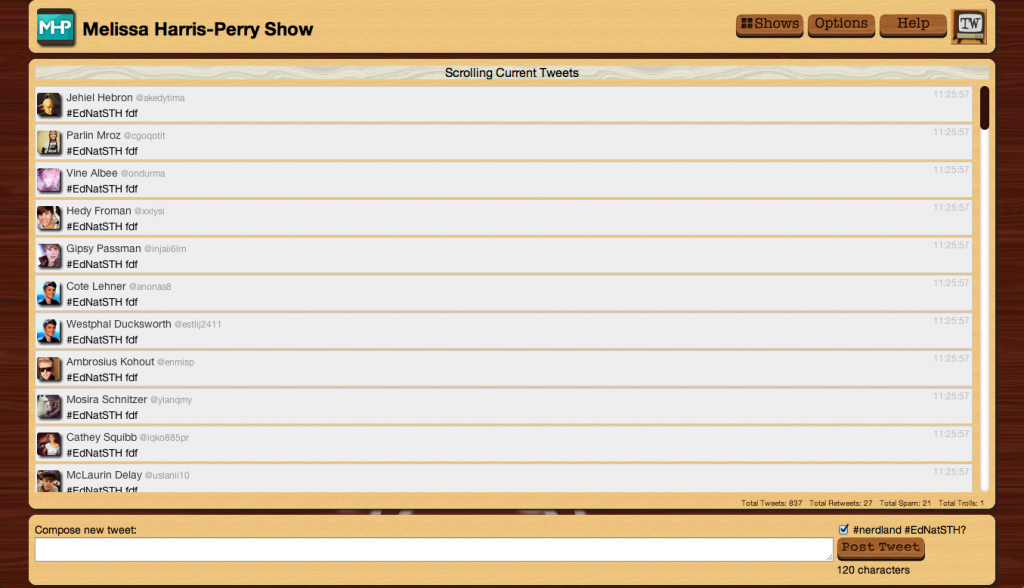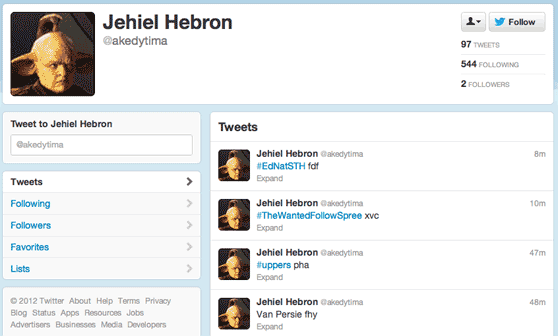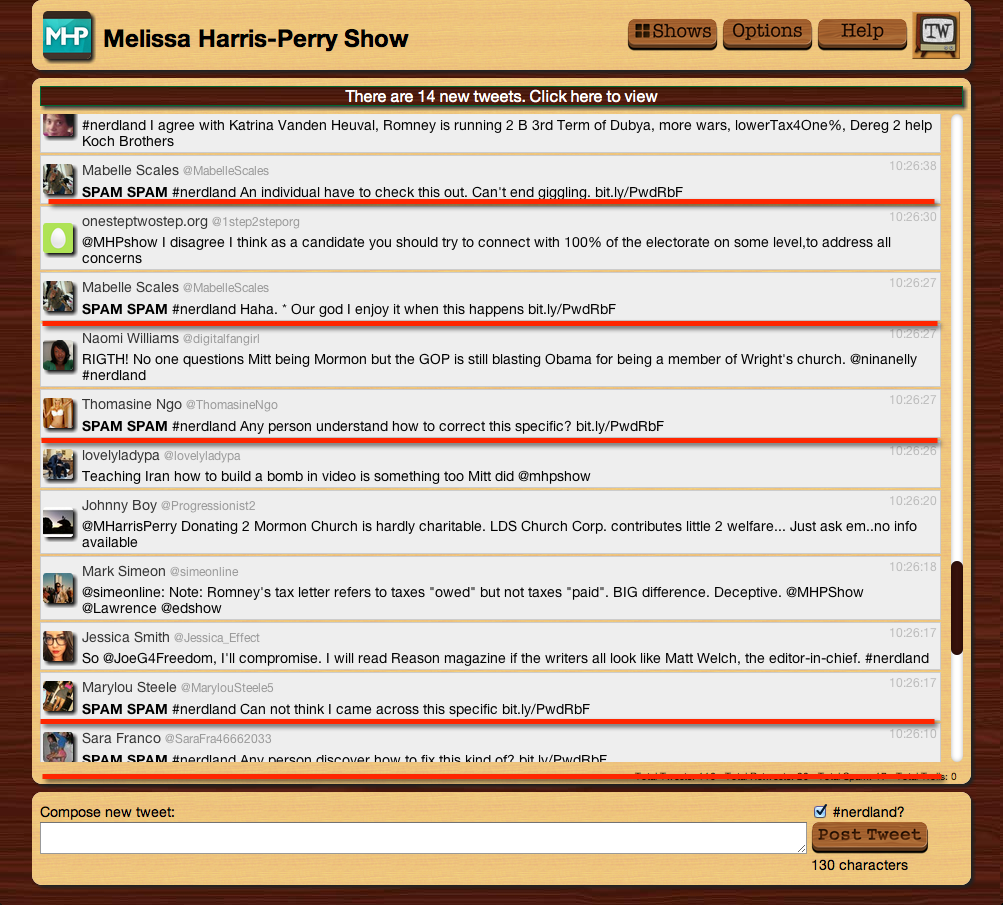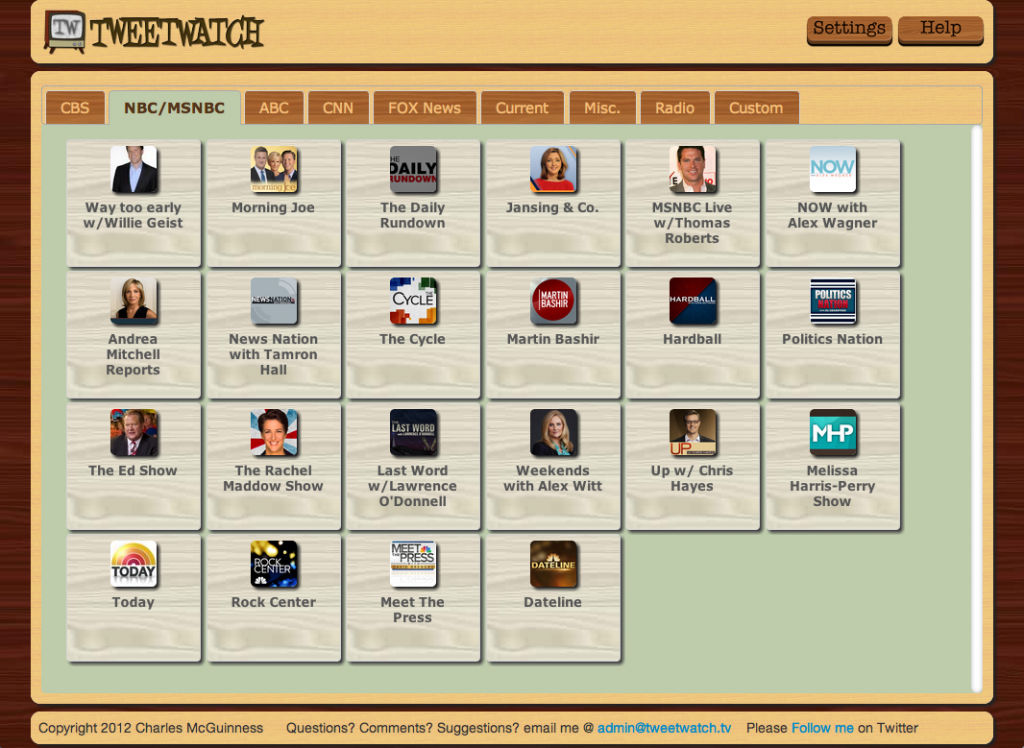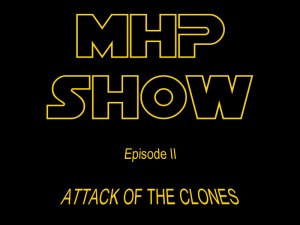Well, after writing in my previous post that Twitter spam always includes URLs, I was proven almost immediately wrong during MSNBC’s Education Nation Student Town Hall hosted by Melissa Harris-Perry. In the middle of the show, approximately 1140 tweets like these flew by:
Note: If you don’t like seeing spam in your Twitter feed, please give my free Social TV Twitter client at http://tweetwatch.tv a try! It will catch these kinds of spam tweets, so even if Twitter’s getting deluged you’ll be sheltered from them.
Mind you, that wasn’t the only spam during the show. The “normal” spam that tries to get you to click on the spammer’s URL was omnipresent throughout the show. But this was different: it was severely disruptive and totally pointless: it aimed to kill the conversation on the hashtag altogether.
How was this spam done? All of these tweets were sent using the twitterfeed.com service. It’s a tool that allows you to automate sending tweets based upon data you feed it. Virtually no other non-spam tweets were sent with these service. Interestingly, twitterfeed.com is often used in “Silencing” attacks, where a huge number of critical tweets are sent to a person to try to chase them off twitter. (See this as an example).
Why was it done? That’s hard to say. Maybe it was a misconfiguration of spam program that ended up with garbage messages. If so, the person doing the configuration is horribly inept. All their twitter accounts were sending the same set of messages to a variety of feeds, and all of the messages are garbage:
Notice the same spam accounts hit Up with Chris Hayes (#uppers) earlier this morning.
Is this a deliberate attempt to undermine the MHP Show? That seems not to be the case, insofar as the spam tweets seem only focused on trending topics. When the Education Nation Student Town Hall #EdNatSTH hashtag was trending, this attack was launched.
Is this a deliberate attempt to perform a “Denial of Service” attack against trending topics (by flooding them with tweets, it basically kills the conversation)? That seems to be the goal. It is basically just behaving badly for the sake of behaving badly.
Could you just block the user and report them for spam and be done with it? Not really — so many fake accounts were used that it would be like whack-a-mole with a hyperactive mole.
One thing is for sure: Twitter should shut down the twitterfeed.com service immediately until it can better control the spam its users generate. And Twitter should shut down these spam accounts: there are 1140 fake accounts out there that have spammed hundreds of times each and are continuing to spam as of this (9/23) evening. Why doesn’t Twitter do anything? They can’t expect people to return each and every one of the 1140 accounts. We’re on the cusp of a breakdown in Twitter if they don’t do something.
One more plug: If you don’t like seeing spam in your Twitter feed, please give my free Social TV Twitter client at http://tweetwatch.tv a try! It’s spam free 🙂 and ad free. It’s your best defense against these spam attacks for now.

